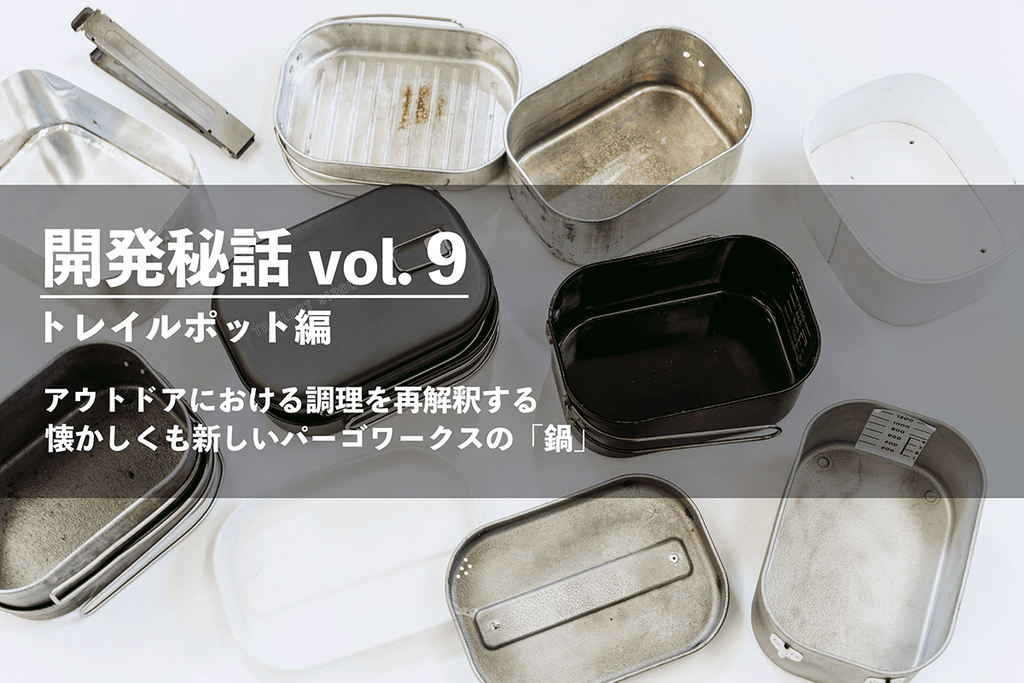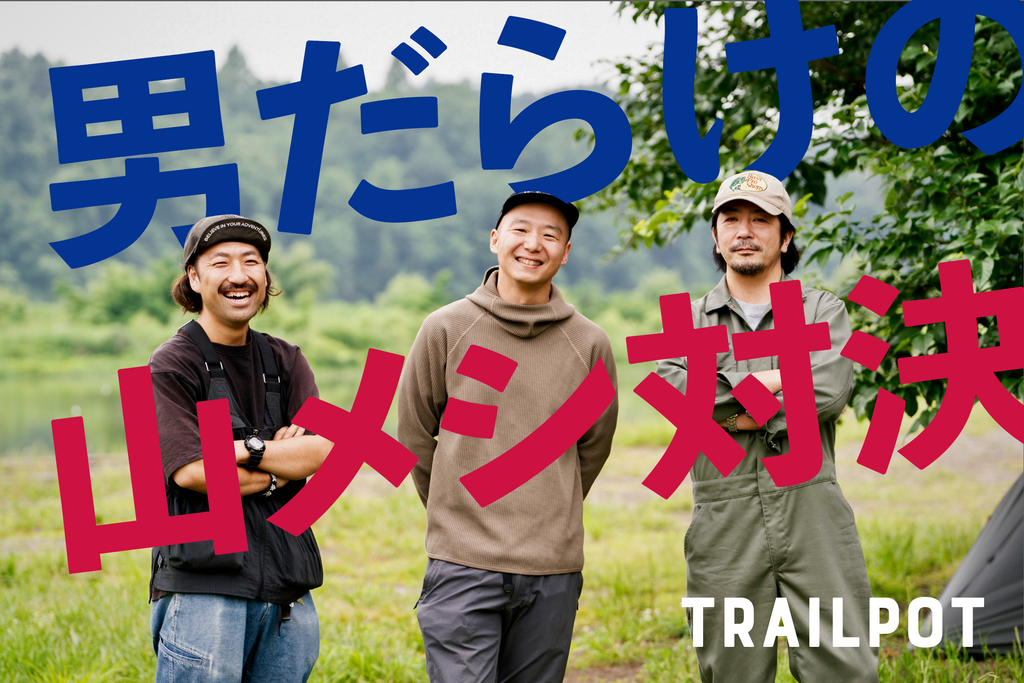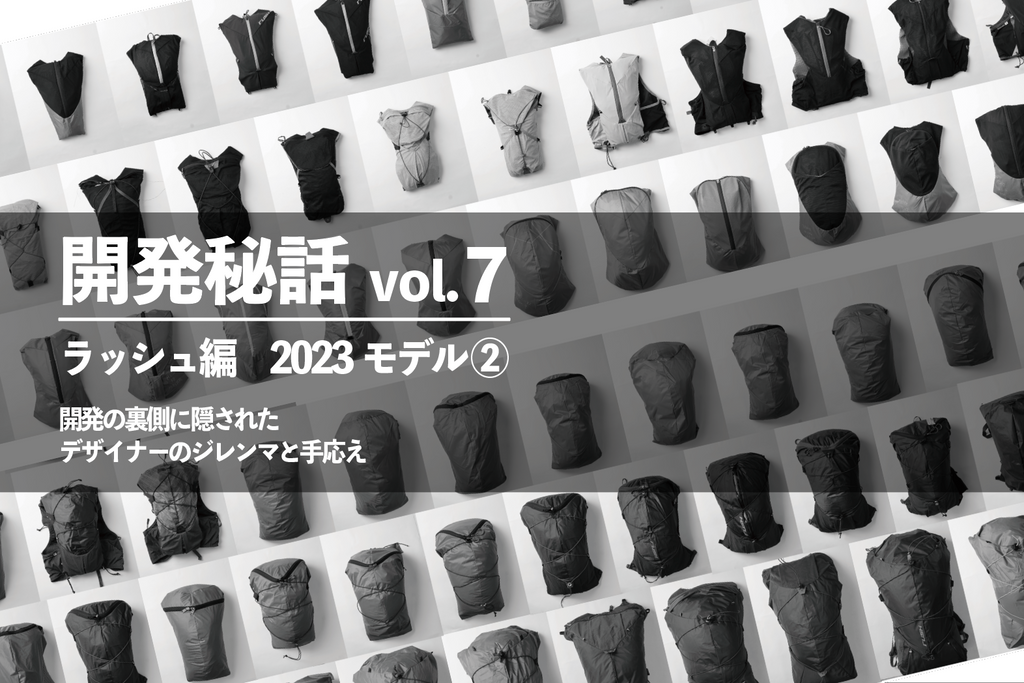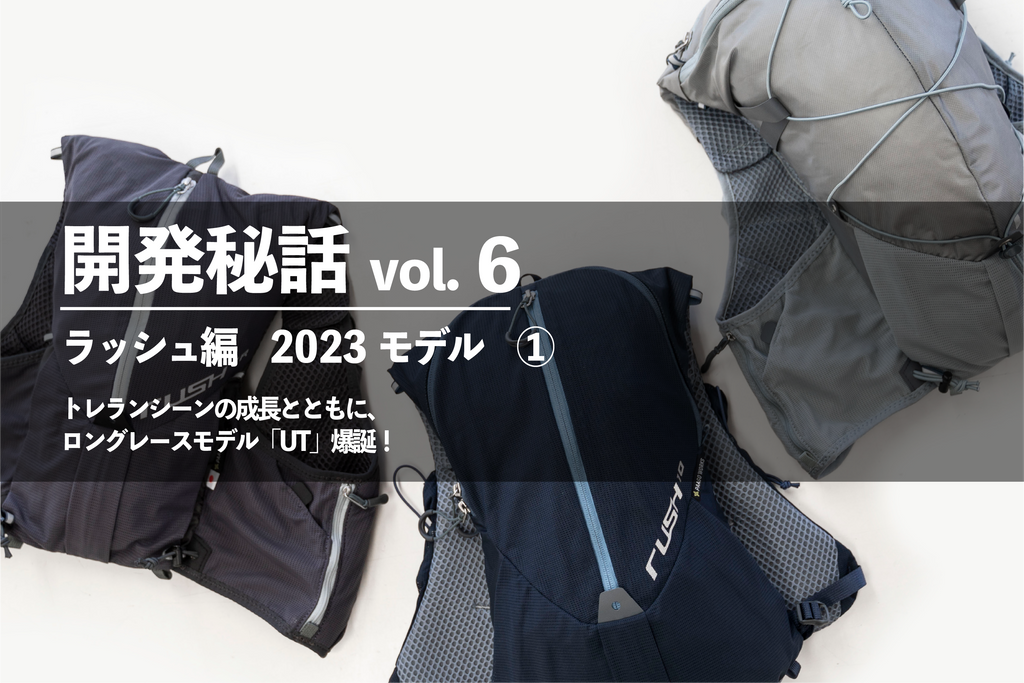MAGAZINE
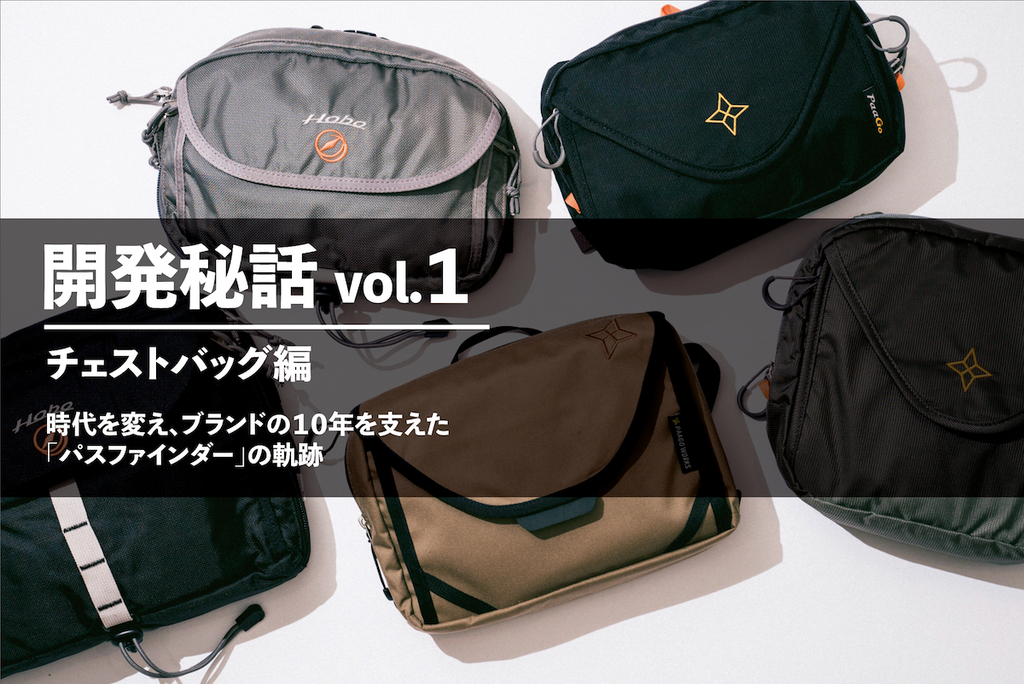
Product History vol.1 Chest Bag
Pathfinder: A decade-definding classic model that has represented the brand for 10 years
This year, 2021 is a milestone year for PAAGOWORKS. The company was founded in 2011, which means this year marks the 10th anniversary of the brand's launch. To commemorate this anniversary year, we will be unraveling the history of PAAGOWORKS, which we don't usually look back on, in this "Product History" series.
I, Kousuke Kobayashi, the editor of this web magazine, will be interviewing Mr. Tetsu Saito. He is the designer and CEO of PAAGOWORKS, and he develops all their products. We will talk about the products and their development background.
The first episode of the "Product History" series is about a chest bag. From the original "Pathfinder" to the latest "Switch," we will show how PAAGOWORKS has focused on developing chest bags.

Interviwer: As this is the first episode, let's start with the chest bag. But perhaps it would be better to start by talking about how Mr. Saito started up PAAGOWORKS in the first place?
Mr. Saito: That means it dates back to before Christ (laughs).
Before starting PAAGOWORKS, I was a freelance product designer, creating outdoor gear and backpacks for a major outdoor brands. I became a freelancer in 1998, after working at a design office designing outdoor equipment.
After becoming a freelancer, I made my own gear for mountain trips while working on client projects. I made gear all the time, but this is one that remains. It has a map case, tool pockets, and can be attached to the chest. And you can see the name tag, "Journey Junky" (laughs).

Interviwer: You already made the prototype of the chest bag by this time. Did you make all of them by yourself?
Yes. I would buy nylon materials from Shinjuku Okadaya and Nippori, then sew them using a sewing machine. Since I was in my 20s, I wanted to create my own outdoor brand, so I made and used the gear myself, wondering if it would sell.
Going back even further, I made my first daypack in junior high school. There was a lot of outdoor equipment I wanted, but I didn't have any money, so I had to make it myself. There was a DIY store nearby, so instead of buying a ready-made product, I bought the materials and made it.
My father was a DIY enthusiast, and I think I inherited that trait from him. Even now, I feel like I still making my own gears as an extension of that. While making metal fittings requires specific tools, I found I could create bags using just a sewing machine.
So I made a bag to attach to my bike so I could go fishing on my bike. It would be what we call a frame bag today. I also made backpacks of about 50L, and clothes, like Tyvek jacket for cycling. It was kind of lame though (laughs).

When I was in my 20s, I went on a bicycle trip around Nepal using a frame bag that I made myself.
Interviwer: Why did you turn a chest bag that was just made for fun into a product ?
Some of you may already know this, but my brother is an outdoor writer called Hobo Jun, and I made a chest bag for him. In 2003, my brother published a book called 『四国お遍路バックパッキング(BE-PAL編集部)』 and he asked me to make a sub-bag for the Shikoku Pilgrimage Trail for his research.
My brother knew that I had made a chest bag, and he wanted a white version of it, but it had Sanskrit characters and the words "Dougyou Ninin" For hiking on The Shikoku Pilgrimage Trail, he was wearing white clothing. He had a Buddhist sutras, a stamp book, and incense. He asked me if I could fit these 3 in a bag, so I made it. It's really cool, isn't it?


I only made this pilgrimage model, but when Mr. Kosuzume (outdoor coordinator, also known for outdoor cooking) saw it, he asked me to sell it in the magazine "BE-PAL". At the time, he was the buyer for the mail-order page at the end of the magazine, and he said, "Tetsu, I want this bag! You should make it and sell me." So, "Pathfinder" was released. The brand name was "HOBO great works" from my brother's pen name.

Interviewer: The first product you developed was the chest bag from "HOBO great works," before founding PAAGOWORKS. What were the key points in developing it?
The chest bag is inspired by military bags, like those US military officers used to carry maps and documents on their chests.
When adapting the chest bag for outdoor use, the biggest challenge was figuring out how to attach it to a backpack. I wanted something that could hang anywhere, but I realized that attaching the same buckle to the shoulder belt would make it easy to remove. This method is now used on the Pathfinder.
You might wonder, "Why a map?" It's simply because I love maps. I was in an orienteering club in high school, and I was always excited to look at a map and plan a route for mountaineering. Back then, there were no map apps on smartphones, so we used paper maps in the mountains.
Interviewer: It seems to be packed with a lot of features designed for travel use.
The pockets are passport-sized so they can be used while traveling. They also have fasteners so they don't dangle in front of your body. This was well thought out. It's just a piece of equipment, but when you pull it, it's pushed in and closes, and it can be unlocked quickly. It's a small detail, isn't it? This was a part for a tent pole, so I ordered it from the manufacturer.

Tent parts are repurposed as bungee cord fasteners.
When we made HOBO's Pathfinder, the production process was important. We didn't make it ourselves; we ordered it from a top-class Korean backpack factory. They agreed to small-scale production due to the relationships we had built during a decade of freelance design work.
When I was working on "Journey Junky," I made everything myself, which is what we would call a "garage brand" today. But after a year and a half, I gave up. I'm a designer, so my mission is to make something new. I realized that I'm not the type to make the same thing over and over again. I had a strong desire to be a garage brand, but I wanted to accomplish "great works".

-Interviewer: In 2003, there were no sacoches yet. What kind of second bags were they use in hiking? For example, a waist pouch?
That's right. There was no secound bag like Pathfinder. That's why I didn't think that this chest bag would be accepted at the time. It was introduced in the pilgrimage guide book, so I thought, "It's enough if people who do the pilgrimage use it."
However, I got inquiries not only from "BE-PAL" subscribers but also from outdoor shops. Mountain guides said it can be used for mountain hiking. The first shop to sell it was WILD-1 store in Iruma. I was really happy.
But, in fact, it didn't go so well as a business. Both my brother and I were doing it as a side job, so even if we received an order, we couldn't fulfill it and had to make the customer wait for about six months. It made people lose their trust. Everyone had high expectations of the brand "HOBO great works," but we couldn't meet them.
But HOBO Pathfinder lasted from 2003 to 2010. I'm really grateful for that.

Product tag from the HOBO great works era and Hobo Jun's book "Shikoku Pilgrimage Backpacking"
-Interviewer: And so you finally launched PAAGOWORKS.
As for details, the map size has been changed from A4 to mountain map size. The bag no longer advertises that it can hold a passport or the first generation iPod (lol), but is instead designed for mountain equipment. A rain cover is now standard equipment, and a slit has been added to the back so that it can be passed around the waist.
We also improved the way the chest bag is attached to a backpack, which is a feature of the chest bag. In the first place, backpack harnesses have evolved and diversified over the past 10 years, so we had to update the attachment method as well. We ordered samples of the essential resin buckle from various companies, both domestic and overseas, and finally decided to use Nifco's USR20. This buckle has no front or back, is very easy to operate, and is durable, making it PAAGO's standard buckle. If you look closely, you'll see that we use it on a variety of bags. It's my favorite.

-Interviewer: What has changed since you went from being a freelance designer to being the brand's founder?
Only Hobo Jun's fans had been bought "HOBO's Pathfinder" at that time. But after Ireleased PAAGOWORKS's Pathfinder, I finally got to hear the real voices of the people who used them. What I was really happy was that users were talking to each other at the store saying, "This is great!" I also passed a lot of users on the mountain. It made me so happy.
It was with Pathfinder that I finally got recognition as a brand and felt a sense of accomplishment as a designer. In 2003, the category of chest bags did not exist, and I felt that Pathfinder created a new market as the original chest bag.
Because I was visiting outdoor shops around, I got direct feedback on both the store's and the customers' evaluations. There were some scary parts, but I took any malfunctions or defects seriously because I knew I could fix them. That's something I still do today.

-Interviewer: Was there anything that was difficult?
Hmm. At that time, everything was so direct. I feel it every day. In the early 2010s, social media was just starting to become popular, and it was fun to get a response when I tweeted things like "We've got some new items in stock!" or "I've made this!"
It was just when UL, which I liked, was starting to get popular, and new garage brands were emerging. I was so happy because I thought, "I've finally found a competitor!!"
Around this time, I started holding exhibitions for retailers and receiving orders. Then, I started making other items with the sales from "Pathfinder". I think it was my wife, who had been supporting me from behind the scenes since the HOBO days, who had a hard time. She had been putting up with my innocent husband.
The Pathfinder has continued on ever since, undergoing minor changes and being renewed into its third generation in 2019.

-Interviewer: The Pathfinder is still in the lineup as a current model, but it must be a product that you have a special attachment to.
As the market and outdoor enjoyment change, the third generation model is a natural evolution to match the "now". The structure is simpler, with only three gusseted pockets and a zipper pocket. The image is that the number of "free seats" has been increased, whereas the previous model had "reserved seats for tools". As tools have become simpler, the pockets have been simplified.
The Pathfinder is the most important item for Paagoworks. On the other hand, I don't want to be tied down. Even musicians can be tied down to a single hit song. It's a product that makes me think about what to do next while still cherishing it.

-Interviewer: And the "Focus" is Paago Works' second product. It's a camera bag for outdoor use.
I had a success story called "Pathfinder", but I wanted to make something new, so I made a camera bag. I was making camera bags for myself originally. That's because I always took my camera to the mountains.
But cameras are a problem in the mountains. They're not strong against rain and they're weak against the cold. At the time, my favorite camera cover was a Montbell camera cover.
The first Focus was released in 2012. It was just when digital SLR cameras were starting to become popular, so there was a demand in the market, and I also wanted one myself.
Also, since I had been designing many camera bags during my freelance days, I wanted to use this experience to make a hole in the conservative market. To be honest, there are too few things that can be used in the field, and there is nothing that I want to use. Japanese camera manufacturers have been recognized around the world for a long time... it's kind of sad.
That's why we've been using the FOCUS a lot and brushing it up. The third-generation model is lighter and stronger than ever, making it a bag that can be taken into any environment.

Left: First-generation Focus, Center: Second-generation Focus, Right: Third-generation Focus (2021)
-Interviewer: Next up is the "Swing." It's a lightweight bag that can be used not only as a chest bag, but also as a shoulder bag.
"Swing" was released in 2015. I thought of combining it with a rain jacket. The chest bag is attached to a backpack, so when it rains, you put it on top of a rain jacket. So I thought of something lighter, more water resistant, and simpler than "Pathfinder".
So when we thought about waterproofing, we wanted to minimize the number of stitching points. Because water seeps in through the seams, we reduced the number of stitching points and sewed them on the outside. Another point is that we used a welded material called TPU coating instead of PU coating on the inside.
"Pathfinder" was in a sense a direct descendant of "HOBO", but "Swing" was designed purely to pursue what I would want to use on the mountain. At the time, sacoches were very popular, so I was asked to make sacoches, but I was particular about not making sacoches.

-Interviewer: It's not just outdoor brands, apparel brands also make sacoches.
It would have been easy for Paago Works to make a sacoche, and I think it would have sold well, but I wasn't very interested in it because the mission of a designer is to create something new. Rather, I thought that the sacoche was a gateway to success for garage makers, and I didn't want to get in the way of the culture of making sacoches. That's why I didn't take a step there. At the time, major manufacturers also released sacoches, but I think that in the end, the culture of sacoches was consumed as fashion. It's a nostalgic story now.
In any case, the Swing is Paago Works' ideal "lightweight, waterproof, and easy-to-use sub-bag."
-Interviewer: Finally, there's the "Switch" that was released this year. It can be used as a chest bag or a shoulder pouch, and can have a variety of attachments, making it simple yet versatile.
During the development stage, we listened to the opinions of our young staff and decided that we wanted to make a new chest bag. We also had the goal of developing a successor to the "Swing."
I was thinking about whether I could make something that could be used not only as a chest bag, but also as a shoulder bag or waist bag. Because I want to use it for various activities, not just for mountain climbing. So I started developing a pouch with a zipper.
In fact, until Swing, the basic shape was "vertical" because it was designed with paper maps in mind, but now it's a smartphone app, and we're free from paper maps. A chest bag needs a certain amount of width, so a vertical shape would be too big, but a horizontal shape gives more freedom in terms of design and makes it easier to store because it has a sharper shape.

-Interviewer: The shape is definitely different from previous models. The fabric and design are along the same lines as the Buddy backpack.
That's right. Until now, I had assumed that it would be attached to other companies' backpacks, but since the Buddy was made, I no longer had to think about that. So I designed it with the combination of the Buddy in mind.

The Switch, released this year, can be easily attached to the Buddy backpack.
The newest addition to the Paago Works chest bag lineage is this hook. Previous attachments were one-to-one because the receiving part was attached to the backpack in advance. So when you changed your backpack, you had to change the attachment. This was the idea we had in mind to free ourselves from that and to give us more freedom.
The prototype used an existing carabiner, but I think that by developing a new one, the possibilities have been greatly expanded.

Attachment history Left: First generation Pathfinder, Middle: Second generation Pathfinder, Right: Current Switch
-Interviewer: Chest bags seem to be becoming increasingly simple.
The key to developing the Switch was finding the right balance between its storage capacity for small items and how it looks when worn on the body. In other words, ease of use and how it looks from the outside. It was a matter of finding that balance.
At Paago Works, we divide manufacturing into three stages: "tools," "products," and "goods." "Tools" are the purest things that you can use yourself. "Products" are things that you can repeatedly and stably produce the same thing. "Goods" are things that are new or marketable. No matter how good something is, there is no value in making something that someone else is already making, so new creations are absolutely necessary.
We make a lot of prototypes, but first I make a lot of things that I want to use, test them, and finish them as my own tools. Next, I repeat the prototyping using realistic materials and manufacturing methods. At this stage, I also take into account the cost and the market, but this is the hardest part. Depending on the item, I make dozens of prototypes, and the design keeps changing, and I think that's the hard but fun part of development.
I do this because it's fun. It's painful if you're forced to do it (laughs). The more prototypes I make, the more I feel good about polishing them. I guess I'm addicted to development.
To be honest, I couldn't do that kind of development method when I was a freelance designer. I had a clear theme, and I could predict the brand image and materials to a certain extent, so I could see the output in advance. But since I joined Paago Works, I use my brain in a completely different way, and I don't know what the output will be until I look at it again the next morning. It can take years to create one model.

-If we count from HOBO Great Works, the predecessor of Pathfinder, it's been around for not just 10 years but 17 years, so what does a chest bag mean to Paago Works?
I think my roots are deeply connected to that. I really love maps. Maps are essential in the mountains, but at the same time, there's something romantic about them. From the stage of spreading out the map and making a plan, to actually going to the mountains and taking action. And then looking back at it when I get home. And I think I love maps even more because I have a background in orienteering.

Participating in the 2019 OMM finals with a Switch prototype
However, when I started making chest bags, few people carried maps when they went to the mountains. I didn't want to have to carry a map with me at all times, but mountaineers walk along mountain trails, so they only took out a map when they were taking a break. I think they only took it out when they wanted to check their current location. I created "HOBO great works" and "Pathfinder" because I wanted to always have one with me.
Even now, the only map cases available are waterproof pouches that roll up, and while they're fine functionally, they're not cool (laughs). In that sense, I think my preference is more for map cases than chest bags. After all, it makes more sense to have one on your chest.
I think the reason why the chest bag, which I thought would not sell well, was accepted is because there are more gadgets. In the past, pouches were just for putting candy in, but at that time, there were more gadgets that could be carried, such as smartphones and cameras. It may have been that time. In 10 years, SNS has increased, and mountain maps have become apps, and things have changed drastically.
That's why, at Paago Works, we want to make the best products for each era. We're not a brand that's stubbornly saying, "We've been making map cases for 50 years!" (laughs). In the end, we'll probably end up making things that fit with the changing times, but I think that kind of person, as a development addict, will be able to continue making things happily for the rest of his life.




